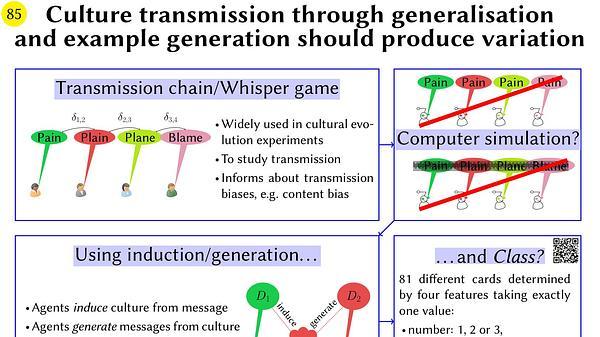Would you like to see your presentation here, made available to a global audience of researchers?
Add your own presentation or have us affordably record your next conference.
keywords:
capuchin monkeys
behavioural traditions
tool use
social learning
Abstract:
Non-imitative social learning mechanisms seem to underlie tufted capuchin monkeys' tool use traditions (enabled by environmentally determined features like terrestriality, foraging and tool material availability). Equating non-imitative social learning outcomes to "species-typical" potential individual innovations, though, is misleading. What a given individual organism can or not learn by itself is not a simple, clear species trait, but rather a probabilistic outcome of its species' "innate" predispositions, individual variation and developmental trajectories, under particular ecological and social contexts… and chance. Therefore, it is problematic to conceive the limits of an animal's "Zone of Latent Solutions" (Tennie et al 2009) as a unique, clear - and unchanging - borderline, instead of a huge grey area. A "Zone of Proximal Acquisition" (Whiten 2023) conveys a more realistic model. Furthermore, although conceptual categories of social learning aim to be clearly defined and mutually exclusive, behavioural repertoire changes tend to be complex events. Well-designed experiments may (hopefully) disentangle them, but real-life, naturalistically observed behavioural acquisition events potentially involve the combined - and hard to tell apart - effects of multiple learning mechanisms. Under such circumstances, a simple and observable behaviour, "Peering" (Schuppli and van Schaik 2019) may enhance the evidence of social learning in tufted capuchins FAPESP/CNPq.
Speaker's social media:
